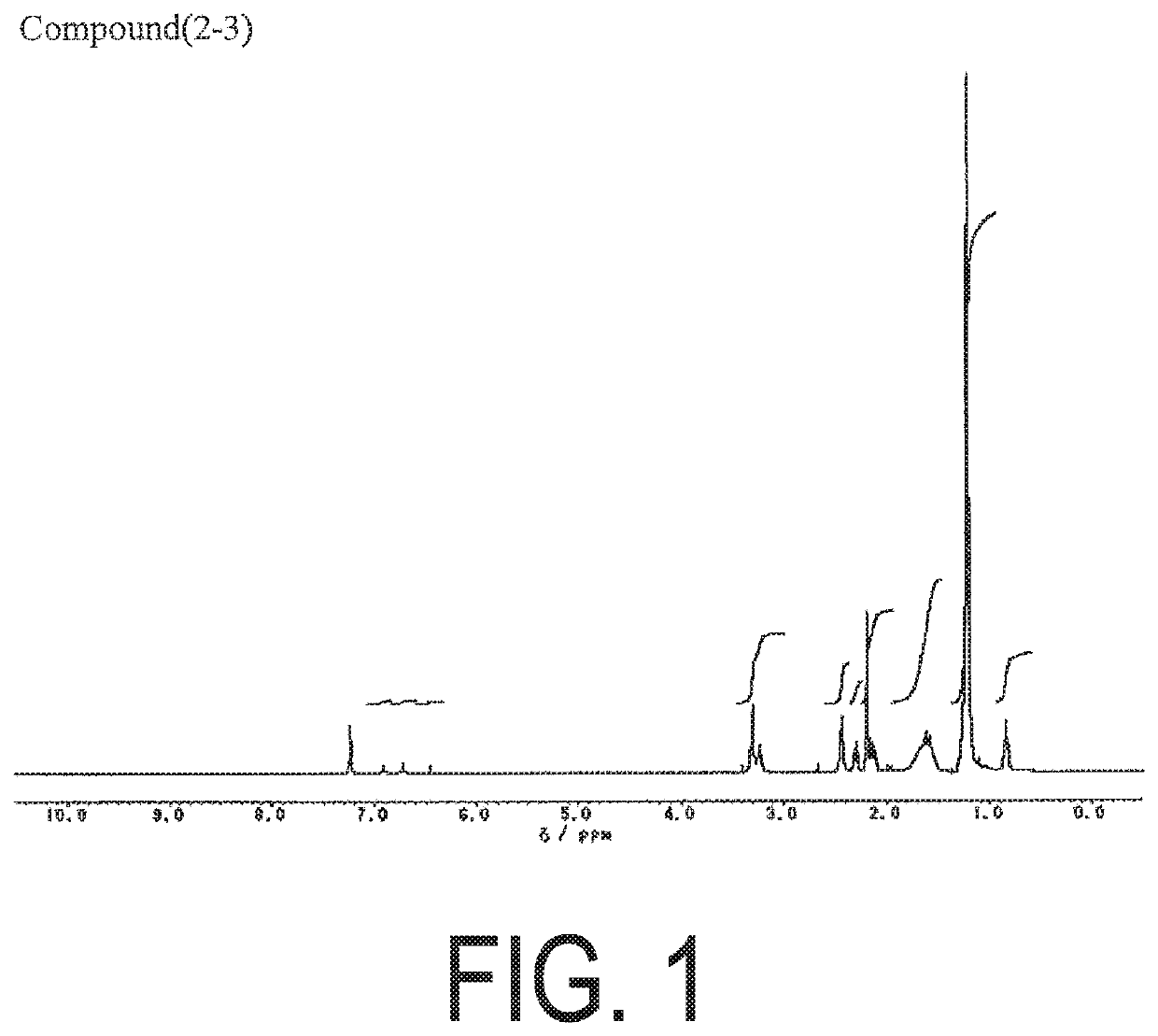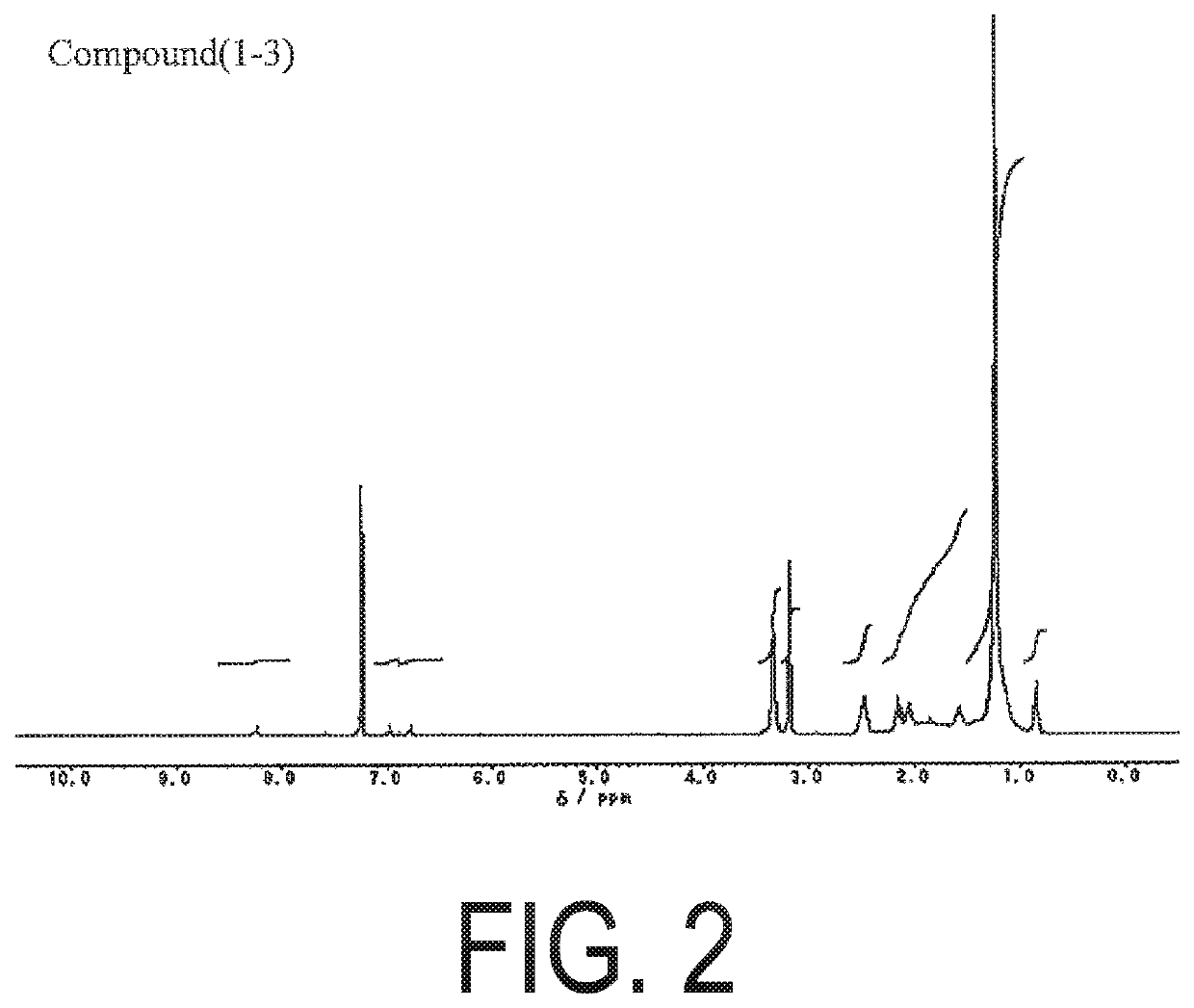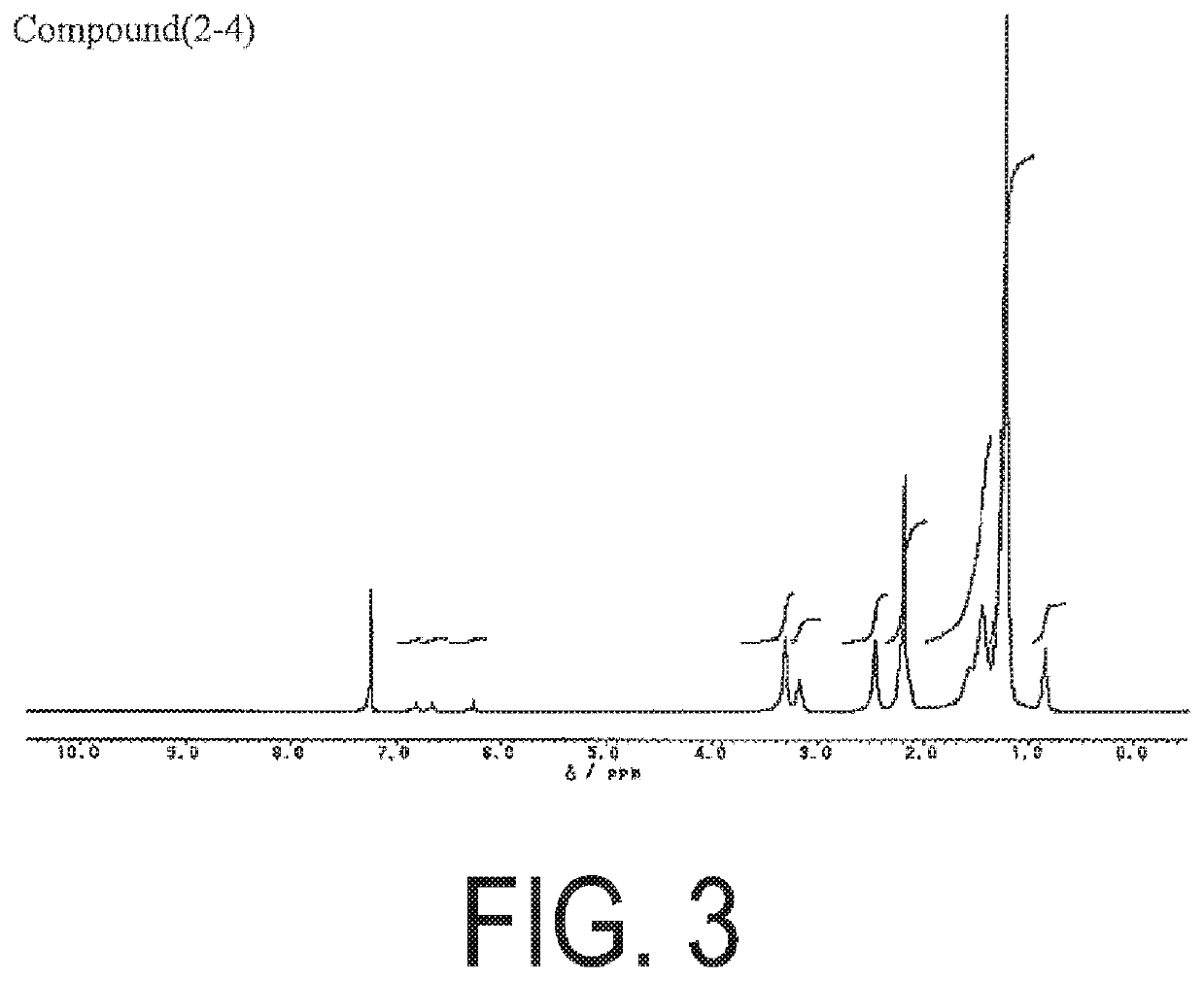Thickening stabilizer and solvent composition using same for producing electronic device
a technology of stabilizer and solvent composition, which is applied in the direction of non-macromolecular adhesive additives, other chemical processes, organic chemistry, etc., can solve the problem that the degree of gelling of 12-hydroxystearic acid cannot be controlled, and achieve uniform stabilization, good coating properties, and easy thickening of fluid organic material
- Summary
- Abstract
- Description
- Claims
- Application Information
AI Technical Summary
Benefits of technology
Problems solved by technology
Method used
Image
Examples
example 1
on of Compound 1-3
[0093]Methyl docosanoate (20.0 g, 56.4 mmol) and ethylenediamine (16.9 g, 281 mmol) were stirred at 110° C. for 18 hours and the reaction product was washed with methanol and then filtered. The filtrate was removed by solvent distillation, and the obtained residue was purified by recrystallization using hexane. The white crystal of N-docosanoylethylenediamine was obtained (yield: 65%, 14.0 g, 36.7 mmol).
[0094]In a solution of N-dimethylformamide (40 ml), N-docosanoylethylenediamine (12.0 g, 31.4 mmol) and triethylamine (6.35 g, 62.8 mmol) were added to succinic anhydride (3.45 g, 34.5 mmol) over 10 minutes and stirred at 100° C. for 15 minutes. After succinic anhydride was dissolved, acetic anhydride (4.81 g, 47.1 mmol) was added dropwise over 10 minutes to the reaction crude solution and stirred at 100° C. for 1 hour. The reaction mixture was poured into water (200 ml), the precipitate was filtered and washed with water. The precipitate was purified by recrystalli...
example 2
on of Compound 1-4
[0097]N-docosanoylethylsuccineimide was obtained by the same method as in Example 1.
[0098]The resulting N-docosanoylethylsuccineimide (8.00 g, 17.2 mmol) and hexamethylene diamine (10.0 g, 86.1 mmol) were stirred at 120° C. for 18 hours. The reaction mixture was poured into methanol and the precipitate was filtered and washed with methanol. The resulting solid was purified by recrystallization using acetonitrile, methanol. The white crystalline powders of N-(docosanoylaminoethyl)aminosuccinamoylaminohexylamine were obtained (yield: 69%, 6.91 g, 11.9 mmol).
[0099]N-(docosanoylaminoethyl)aminosuccinamoylaminohexylamine (3.25 g, 5.59 mmol), 37% aqueous formaldehyde (2.73 ml) and formic acid (1.55 g, 33.7 mmol) were dissolved in 2-propanol (15 ml) and stirred at 100° C. for 4 hours. The reaction mixture was poured into 1 M aqueous sodium hydroxide solution (20 ml) and the crystals were filtered. The resulting crystals were recrystallized with methanol and acetone, and t...
example 3
on of Compound 1-1
[0101]Methyl eicosanoate (18.0 g, 55.1 mmol) and ethylenediamine (16.5 g, 276 mmol) were stirred at 110° C. for 18 hours and the reaction product was washed with methanol and then filtered. The filtrate was removed by solvent distillation, and the obtained residue was purified by recrystallization using hexane. The white crystal of N-eicosanoylethylenediamine was obtained (yield: 68%, 13.3 g, 37.5 mmol).
[0102]In a solution of N-dimethylformamide (30 ml), N-eicosanoylethylenediamine (10.0 g, 28.2 mmol) and triethylamine (5.71 g, 56.4 mmol) were added to succinic anhydride (3.10 g, 31.0 mmol) over 10 minutes and stirred at 100° C. for 15 minutes. After succinic anhydride was dissolved, acetic anhydride (4.32 g, 42.3 mmol) was added dropwise over 10 minutes to the reaction crude solution and stirred at 100° C. for 1 hour. The reaction mixture was poured into water (150 ml), the precipitate was filtered and washed with water. The precipitate was purified by recrystalli...
PUM
| Property | Measurement | Unit |
|---|---|---|
| temperature | aaaaa | aaaaa |
| temperature | aaaaa | aaaaa |
| temperature | aaaaa | aaaaa |
Abstract
Description
Claims
Application Information
 Login to View More
Login to View More - R&D
- Intellectual Property
- Life Sciences
- Materials
- Tech Scout
- Unparalleled Data Quality
- Higher Quality Content
- 60% Fewer Hallucinations
Browse by: Latest US Patents, China's latest patents, Technical Efficacy Thesaurus, Application Domain, Technology Topic, Popular Technical Reports.
© 2025 PatSnap. All rights reserved.Legal|Privacy policy|Modern Slavery Act Transparency Statement|Sitemap|About US| Contact US: help@patsnap.com



